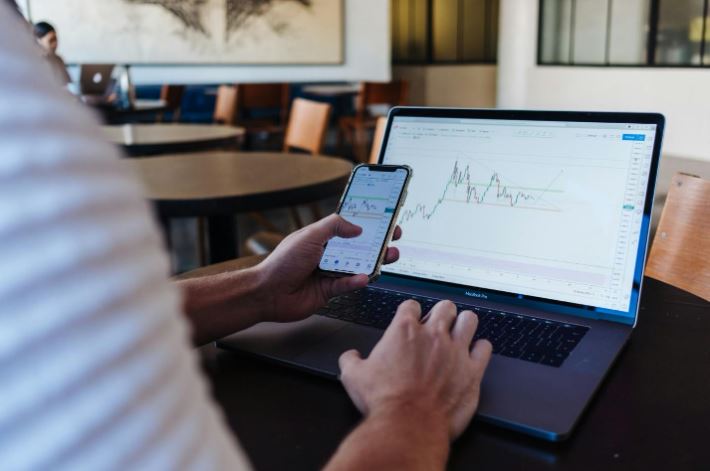 For many investors in Kenya, trading news is an essential guide for shaping strategies. In fast-paced markets, a steady flow of data can overwhelm, making it hard to see which signals truly matter.
For many investors in Kenya, trading news is an essential guide for shaping strategies. In fast-paced markets, a steady flow of data can overwhelm, making it hard to see which signals truly matter.
Correlation techniques help filter noise by revealing how variables move together, allowing traders to decide where best to direct their focus.
Kenya’s trading environment has expanded rapidly, drawing local and international investors to the Nairobi Securities Exchange. Digital platforms grant instant access to global data, offering vast possibilities but also complicating analysis.
Interpreting huge volumes of news can lead to confusion if no robust tools are in place.
With correlation, Kenyan traders can determine which assets, global events, or economic indicators have the strongest impact on local equities, currencies, or commodities.
Currency trading offers a prime example. The Kenyan shilling’s value can track movements in regional trade balances, commodity prices, and remittances. If shilling performance seems closely tied to tea export volumes, then changes in weather patterns, export data, or consumer demand abroad can influence currency values.
Recognizing such relationships helps traders plan strategies with greater precision, reducing the guesswork that often arises when markets shift.
Macroeconomic indicators also warrant attention. Kenya’s inflation rate, GDP growth, and policy decisions may correlate with stock movements in specific sectors. A strong consumer spending pattern could boost companies selling daily goods.
If inflation spikes, however, import-dependent firms might incur higher costs and see profits slip. By mapping out these links, traders can align themselves with favorable trends or brace for downturns in advance.
Key Correlations and Market Sentiment
A balanced approach to risk management relies on knowing how assets move together. Portfolios heavily composed of correlated stocks might reap rewards in a rising market but can face amplified losses if sentiment sours.
Kenyan traders who mix assets with low or negative correlation achieve more stability, safeguarding themselves from broad sell-offs triggered by a single event. In an emerging market prone to rapid policy or economic changes, this resilience is paramount.
Kenya’s dependence on agricultural exports underscores the need to track correlations with global commodity prices. Tea, coffee, and flowers dominate exports, and demand in key importing regions can shift abruptly based on economic or cultural factors. Linking these external indicators to domestic commodity values provides insight into future price movements.
If a primary importer experiences a downturn, local exporters may brace for weaker demand and potential declines in revenues, all of which can ripple through related sectors.
Correlation can also illuminate patterns in market sentiment. If online discussions about a particular industry consistently coincide with surges in trading activity, then social media chatter may be a signal worth following. In Kenya, debates around infrastructure projects, new technologies, or political developments can sway how investors perceive certain assets.
Recognizing these sentiment-driven correlations lets traders anticipate sudden enthusiasm or caution that can drive markets in unexpected ways.
It is important to note that correlation is neither static nor guaranteed. Relationships that held true last year might weaken as economies evolve or as consumer behavior shifts. Kenyan traders should periodically revisit their correlation analyses to ensure data remains accurate.
A factor that once aligned strongly with stock performance might fade if government policies change or if global events reduce the relevance of certain indicators.
By staying flexible, investors can adapt to shifting trends rather than relying on outdated assumptions.
For traders seeking deeper insights, correlation also enhances fundamental analysis, which examines a firm’s financial health and competitive position. If a telecom company’s revenue correlates with rising incomes in rural communities, macroeconomic data on wage levels might serve as an early warning system for revenue shifts.
Pairing correlation with fundamental research yields decisions grounded in both numerical evidence and real-world context.
Furthermore, correlation insights can guide optimal entry and exit points, enhancing profitability for Kenyan traders. Ultimately, correlation techniques function like a map, guiding traders toward signals that genuinely matter while filtering out the countless headlines that swirl around the market.
This approach increases confidence in each decision, whether it involves timing a currency position or adjusting holdings in a sector poised for growth.
By integrating correlation insights into risk management, Kenyan traders can build portfolios better equipped to weather sudden market disruptions.
Conclusion
Refining analysis methods has become essential as Kenyan markets integrate with the global financial landscape. Correlation-based research helps local investors spot the drivers of asset price changes and anticipate potential risks.
From the Kenyan shilling’s reactions to commodity shifts, to the influence of social sentiment on stock performance, correlation uncovers deeper connections that can unlock an edge in an otherwise overwhelming sea of data.
Traders who embrace this analytical tool are more likely to adapt, thrive, and seize the opportunities that abound in emerging markets, ensuring they remain competitive in an ever-evolving environment.








